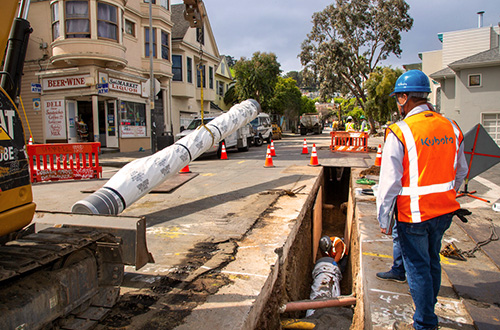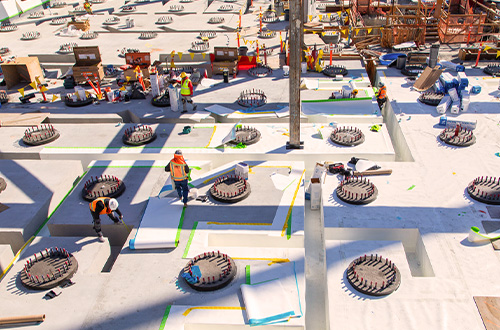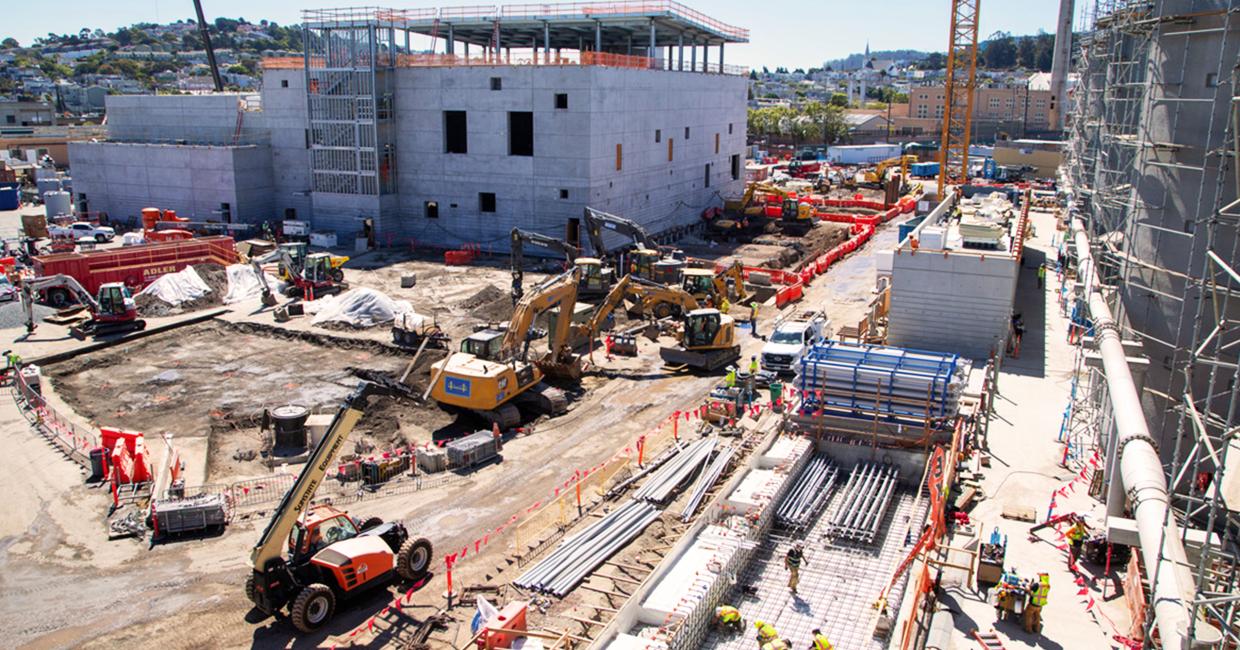As San Francisco marks the 119th anniversary of the Great Quake on April 18, the San Francisco Public Utilities Commission (SFPUC) continues to invest in seismic resilience across the City's water, power, and sewer systems -- essential services that support daily life for everyone who lives in, works in, or visits the Bay Area region.
Preparing for the next major earthquake is a shared responsibility, and a key driver behind many of the investments the SFPUC makes with ratepayer funds.
Because We Can't Live Without Water

- The multi-billion-dollar Water System Improvement Program to repair, replace, and seismically upgrade the most vulnerable portions of our water system is almost complete. It includes 87 projects spanning seven counties, from fortifying major pipelines at earthquake fault crossings to upgrading water treatment plants to rebuilding an entire dam at the Calaveras Reservoir.
- Separately, the agency is currently upgrading some of its oldest water pipelines in San Francisco using state-of-the-art technology to protect residents after an earthquake. SFPUC crews have begun installing a special type of pipe in the water distribution system that serves Zuckerberg San Francisco General Hospital, among other customers. Manufactured by the Japanese company Kubota, this innovative pipe has flexible joints that bend during an earthquake but do not break. This allows crucial water supplies to continue flowing to customers when they need it most.
Public Power That Performs Under Pressure
- On the power side, SFPUC powerhouses, which generate electricity, and transmission assets, which carry that electricity to the Bay Area, have received seismic retrofits. The SFPUC’s Power Enterprise also recently completed the new Bay Corridor Transmission and Distribution Project, which is built to modern seismic safety standards and provides electricity to buildings in the Mission Rock area and southeast San Francisco. The SFPUC also completed new solar-plus-energy-storage systems on City properties, allowing buildings to operate independently from the grid and rely on their own backup power during outages. The most recent example -- a partnership with the San Francisco Public Library at 190 9th Street – helps ensure critical community services can continue during emergencies.
Securing Sewer Systems for Emergencies
Seismic resilience is also a strategic priority for the SFPUC’s Wastewater Capital Improvement Plan. These long-term infrastructure improvements include investing billions of dollars to upgrade the earthquake resilience of critical facilities at the Southeast Treatment Plant in the Bayview neighborhood, the largest wastewater treatment plant in the City. It handles nearly 80% of San Francisco's combined stormwater and wastewater every year.

“Investing in the entire system, top to bottom, in order to withstand the inevitable major earthquake is one of the most important actions we can take,” said Stephen Robinson, Assistant General Manager for Infrastructure. “No matter where in San Francisco you live or work, the Southeast Treatment Plant improvements matter because a failure in one area could impact the entire system.”
Work began with the installation of a new interior coating in the Effluent Control Structure to strengthen the building’s walls, helping it to better withstand a major earthquake. Upgrades continue with critical projects now under construction including the New Headworks and Biosolids projects.
Resilience Begins at the Southeast Treatment Plant
The Headworks Facility plays a vital role by removing trash and debris at the beginning of the wastewater treatment process. The Biosolids Digester Facilities will convert [NC1] the treatment process, into renewable natural gas for injection into PG&E's existing gas pipeline. Both of these new facilities are designed to withstand a magnitude 7.8 earthquake on the San Andreas fault and a magnitude 7.1 earthquake on the Hayward fault. They are being built to modern industry standards to ensure they can operate within 72 hours of a major seismic event. The critical treatment processes are designed with redundant infrastructure to provide reliability and operational flexibility.
Construction will start on two new Operations, Engineering, and Maintenance Buildings in Summer 2025 to provide much-needed shop space for maintenance and trade crews as well as workspaces and facilities for operation, engineering, and maintenance staff at the Southeast Treatment Plant. These new buildings are designed to meet the latest International Building Code. The buildings’ structural elements and foundation supports were chosen “to ensure the safety of its occupants and rapid post-earthquake recovery with minimal impact to operation,” according to SFPUC Project Manager Robert Mau.
“Not only do these investments protect our infrastructure, but they also protect our most important asset – our workforce,” said Robinson. “The people who make the Southeast Treatment Plant run successfully every day deserve to work in the safest environment possible.”
Strengthening the Services We Rely on Daily
From major capital investments to routine repairs, the SFPUC is strengthening essential water, sewer, and power infrastructure that communities rely on every day to ensure our systems are ready for future emergencies. Residents should also prepare for a major earthquake. Visit sfpuc.gov/BePrepared to learn about how to properly store and treat water, as well as how to shut down your home water supply for when the next major earthquake hits.


